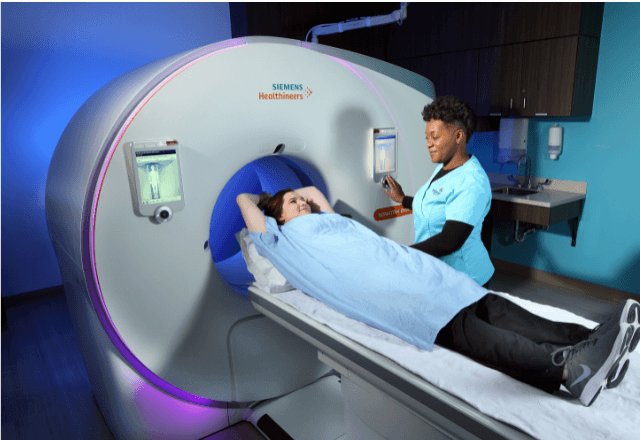Intravascular Imaging Testing in Preclinical Studies
Intravascular imaging testing plays a crucial role in preclinical studies by providing detailed insights into the behavior of medical devices and therapies within the vascular system. This advanced imaging technique is essential for evaluating the safety, efficacy, and performance of intravascular devices such as stents, catheters, and drug-eluting balloons.
Preclinical testing using intravascular imaging helps researchers understand how these devices interact with the blood vessel walls under various physiological conditions. This information is vital for optimizing device design, predicting potential risks, and ensuring compliance with regulatory standards like ISO 10993-18, which addresses biocompatibility of medical devices.
The testing process typically involves introducing a catheter into the target blood vessel, often via the femoral artery or vein. The catheter is equipped with an intravascular imaging module that captures high-resolution images of the vascular environment. These images are analyzed to assess factors such as vessel compliance, luminal diameter changes, and potential tissue reactions.
The primary goal of this testing is to ensure that medical devices do not cause adverse effects on the vasculature during normal use. By identifying potential issues early in development, researchers can refine device designs and materials before conducting larger-scale clinical trials. This reduces the risk of costly failures later in the product lifecycle.
Additionally, intravascular imaging testing supports regulatory compliance by providing comprehensive data that can be used to demonstrate safety and efficacy as required by international standards such as ISO 10993-24 for biocompatibility evaluation. This ensures that devices meet the rigorous requirements set forth by organizations like the FDA and EMA.
At Eurolab, our team of experts specializes in conducting intravascular imaging tests to support preclinical research. We use state-of-the-art equipment and follow strict protocols to ensure accurate and reproducible results. Our services include comprehensive data analysis and reporting tailored to meet the specific needs of your project.
By leveraging intravascular imaging testing, you can gain valuable insights into the performance of your medical devices in vivo. This knowledge is invaluable for improving product design, enhancing safety profiles, and accelerating the development process. Our team stands ready to assist you with all aspects of this critical testing phase.
Benefits
The benefits of intravascular imaging testing in preclinical studies are numerous and far-reaching. Firstly, it allows for early detection of potential issues that could arise during the use of medical devices within the body. This proactive approach helps minimize risks associated with late-stage failures, which can be both costly and time-consuming.
Another significant advantage is the ability to tailor device designs specifically to meet individual patient needs. By understanding how different materials or configurations interact with the vasculature, researchers can make informed decisions that lead to more effective treatments.
Intravascular imaging also enhances compliance with regulatory requirements by providing robust data supporting safety and efficacy claims. This ensures that your products are not only innovative but also meet all necessary standards for market entry.
Moreover, this testing method promotes safer clinical trials by identifying risks before they become critical problems. It allows manufacturers to refine their approaches based on real-world data rather than relying solely on theoretical models or animal studies.
The use of intravascular imaging can significantly reduce development costs and timeframes. Early identification of design flaws or material compatibility issues translates into fewer iterations during the prototyping stage, leading to faster product launches.
Eurolab Advantages
At Eurolab, we pride ourselves on offering unparalleled expertise in intravascular imaging testing for preclinical studies. Our team of highly skilled professionals combines extensive experience with cutting-edge technology to deliver accurate and reliable results every time.
We employ advanced imaging systems that provide high-resolution images of the vascular system, allowing us to capture detailed views of vessel walls and lumens. This level of clarity ensures precise measurements and assessments, which are essential for comprehensive analysis.
Our dedicated laboratory facilities are equipped with everything needed for successful intravascular imaging tests, including specialized catheters and imaging probes. We also offer a range of ancillary services such as data processing and interpretation to help clients make sense of complex image sets.
The quality management systems we follow ensure that all testing processes adhere strictly to established protocols, thereby maintaining consistency across multiple projects. This commitment to excellence guarantees consistent outcomes and builds trust with our clients.
In addition to technical proficiency, Eurolab maintains strong relationships with leading academic institutions and industry partners. These collaborations foster continuous improvement in our methods and techniques, ensuring that we remain at the forefront of innovation within this field.
Use Cases and Application Examples
Intravascular imaging testing is widely used across various applications where understanding vascular behavior is crucial. One common application is in the development of coronary stents, which require precise evaluation of how they interact with blood vessels during deployment.
Another example involves assessing the impact of drug-eluting stents on vessel integrity over time. By monitoring the progression of neointimal hyperplasia (NHI), researchers can determine whether certain drugs are effective at reducing this unwanted tissue growth.
For vascular grafts, intravascular imaging helps evaluate patency rates and identify areas prone to thrombosis or infection. This information is vital for optimizing graft design and materials selection.
In the case of catheters used in minimally invasive procedures, intravascular imaging provides insight into guidewire navigation through tortuous segments of arteries or veins. Understanding these challenges allows developers to create more effective tools for guiding procedures safely and efficiently.
Drug delivery systems like balloons coated with therapeutic agents also benefit from intravascular imaging testing. Evaluating how quickly and uniformly the drug distributes within the vessel wall is essential for ensuring optimal treatment outcomes.





